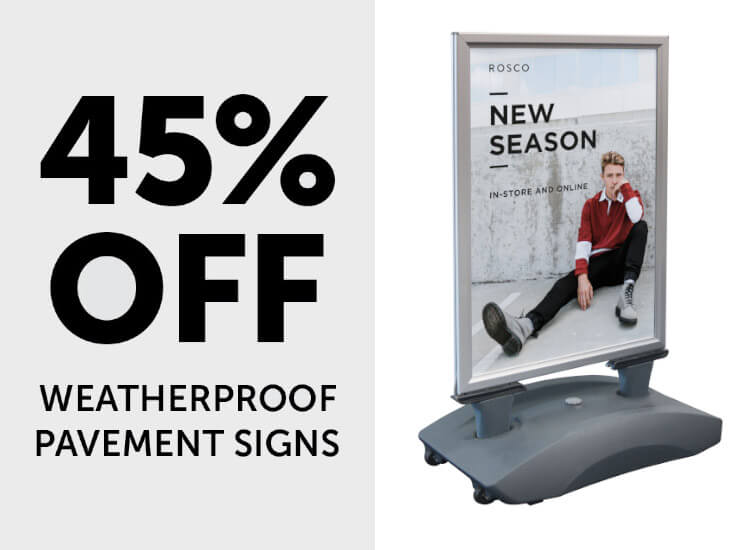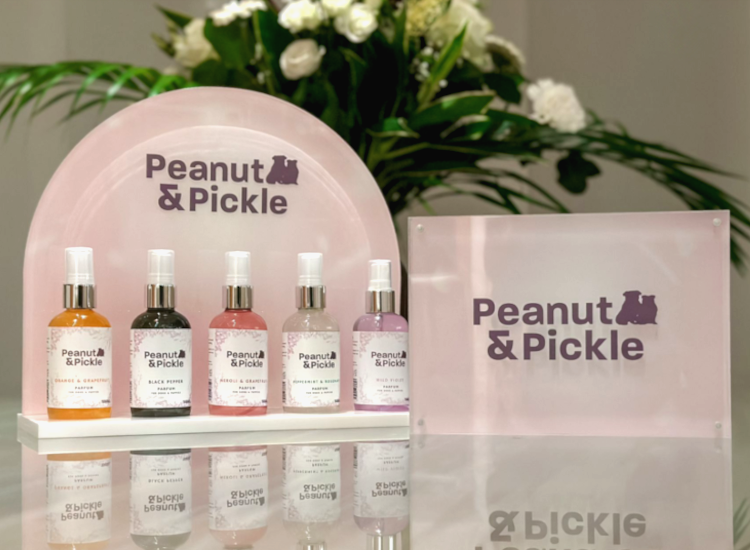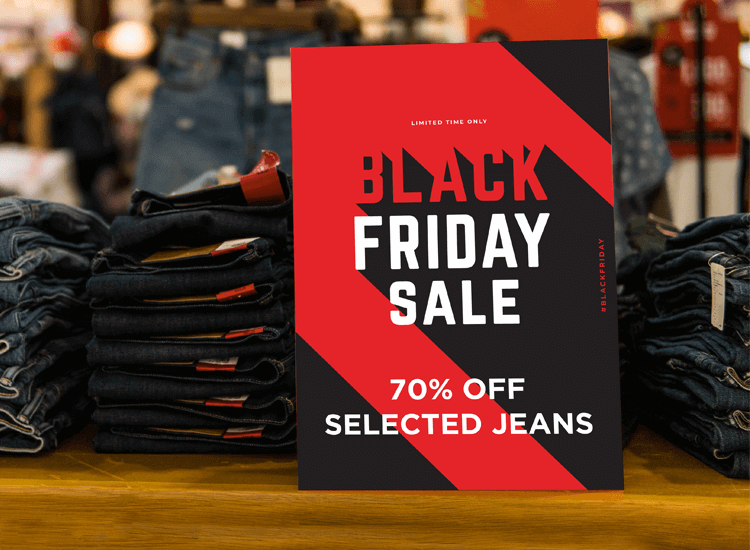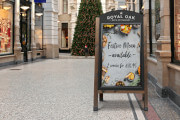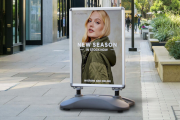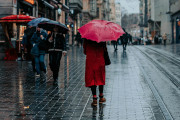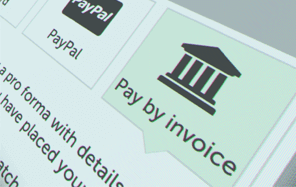Why Is Product Placement Important?

What is product placement in retail?
Product placement in retail is the strategic positioning of products within a store to attract attention, influence purchasing decisions, and maximise sales. It involves placing items in locations where shoppers are most likely to notice and buy them.
Where you place your products has a huge influence on your customers. There’s a reason why every supermarket displays their fresh fruit and vegetables at the front of the store, and a range of snacks by their checkouts. You may also have noticed that the big brands are placed in the centre of shelves, while budget brands are generally placed on the bottom shelf - but why?
"In-store product placement is the art of determining where your products appear within a retailer through planning, negotiation, and design."- Repsly [1]
Eye level is buy level!
This is the key concept that you should always have in mind when deciding the layout of your products. Products placed within the eyeline of browsing customers are more likely to sell better - that’s why big brands and products with the highest mark-up for retailers are nearly always placed in this position, while products that bring in the least amount of revenue for the store are placed on lower shelves.
Recent studies have thrown a spanner into this theory slightly, as researchers found that the ideal spot for attracting customers’ attention is approximately 14.7 inches below a shopper’s eye level [2].

Given that the average person’s eye level is around 62 inches, the optimal height to display your key products is anywhere between 47 - 62 inches from the ground.
How can I use my store layout to boost sales?
The layout of your store is key to deciding how to position your products for maximum impact. If you are a big business who can afford to carry out detailed research, it is worth investing in real-time shelf analytics and other technology to drill down into the difference in sales between products when placed in certain areas.
For smaller retailers, there are five good rules of thumb that we advise you follow, in order to make sure that you make the most of the space you have in store.
1. Put essentials at the back of the store
Popular and essential food products, such as milk and bread, should be placed on the back walls of your store so that customers have to walk past a large amount of your other products to get there. This makes them more likely to pick up other items on their way through your store and increase your average order value.
2. Place high-value items at the entrance
Conversely, placing high value, limited edition and luxury items towards the front of your store entices customers inside and makes them more likely to make additional impulse purchases.
3. Eye level is buy level
As discussed, placing key items in the middle of your shelving at (or just below) eye level is a great way to boost sales, as this is where people's eyes will naturally fall as they move around your store.
The only exception to this rule is for products aimed at children or toddlers, as their eye level is lower so they are more likely to notice products on bottom shelves.

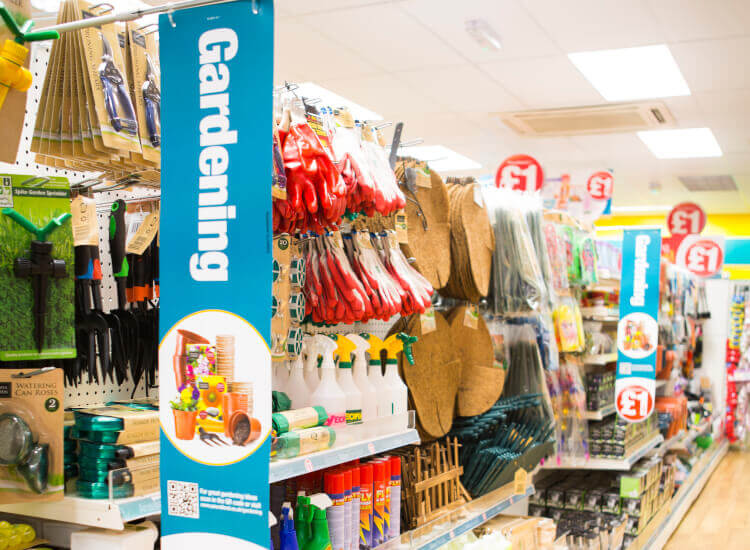
4. Group products by occasion, as well as function
Use aisle end caps or display stands to place complementary products together based around an occasion, such as cards and flowers for Mother’s Day, or beer and charcoal for BBQ season. This is an easy opportunity to increase impulse purchases!
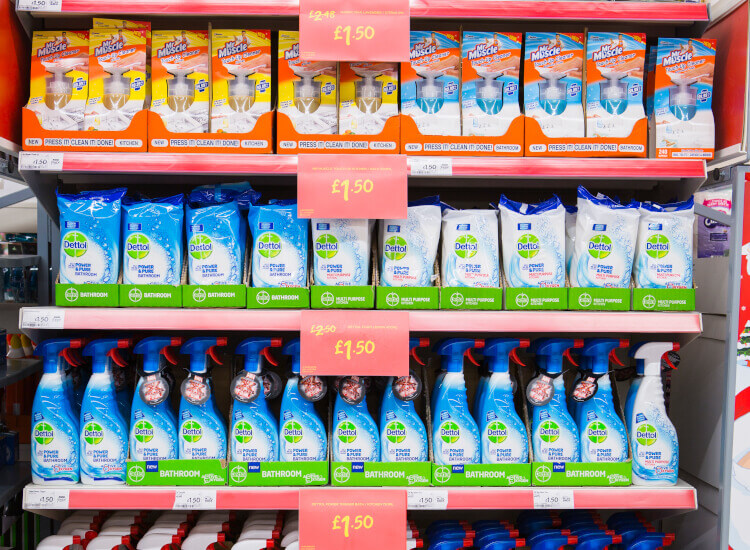
5. Leave enough room for customers
If you want customers to browse for longer and increase your average order value, then you need to give customers enough room to feel comfortable. The more cramped your store is, the more likely it is that people won’t want to stay for long.
Where possible, make sure that your aisles are wide and that there are no places where bottlenecks can form as customers navigate around your store.
"[C]onsumers make price inferences based on products’ vertical shelf space position (i.e. higher equals better and more expensive)."- Wongkitrungrueng et al. [3]
Use traditional POS to help your shelf placement marketing
Now we’ve established the best places to display your key products, how can you use signage and merchandising displays to draw maximum attention to them?
Shelf signs
Draw attention to promotional prices, new products and special offers on your shelves using shelf wobblers, talkers and strips.
Using brightly coloured shelf signage is great for quickly catching passing customers’ attention and is easy to update when your information needs to be changed.

-
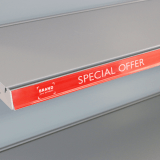
Bespoke Printed Shelf Edge Infill Strips
INF In stockFrom: £1.89 ex. VATView -
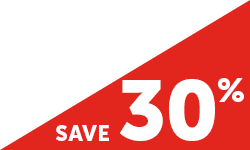
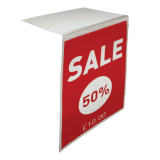
PVC Pallet Card Holder
PS2 In stockWas: £1.47 From: £0.68 ex. VATView -

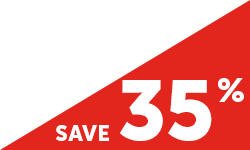

Illuminated Ticket Strip Kit
ITS In stockWas: £97.86 From: £65.49 ex. VATView -

Magnetic Banner Hanger with Optional Banner
AFS3 In stockFrom: £1.89 ex. VATView

Display stands
Boost your key products to the optimum eye level height when they are not placed on shelves by using freestanding display stands.
We have a wide range of stands in stock, including ladders, pedestals and crates, all designed to make the best use of vertical space and to prompt your customers to take a look.
-


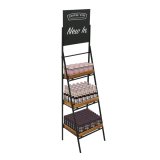
Folding Ladder Shelf Stand With Chalkboard Header
FLS In stockWas: £228.96 From: £179.90 ex. VATView -
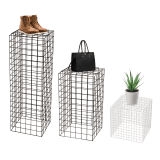
Wire Display Plinth
WDP In stockWas: £69.58 From: £45.00 ex. VATView -

Freestanding Display Sphere
FDSPR In stockFrom: £43.81 ex. VATView -
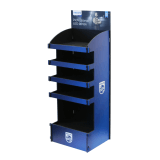
Free Standing Display Unit
FSD In stockFrom: £255.00 ex. VATView
Colour schemes matter too
While your product placement is key to boosting sales, you also need to consider the impact that colour is having on your business. Unlike text signage, a colour scheme can have a big impact on customers’ feelings - whether they realise it or not!
Blue is often used by technology brands, white is associated with medical brands and red signifies some urgency, such as limited time discounts or danger.
You may consider aligning your store’s product selection with the colour they are most associated with, in order to give your customers a sense that you are trustworthy within this industry.

Final Thoughts
Effective product placement is about much more than filling shelves; it’s a deliberate strategy that shapes how customers shop and what they buy. By carefully positioning essentials, highlighting premium products, and making smart use of eye-level displays, retailers can not only boost sales but also create a smoother, more engaging shopping experience.
When combined with clear signage and well-designed POS materials, these techniques help ensure that the right products catch the right eyes at the right time. In short, thoughtful product placement is one of the simplest yet most powerful tools for driving both customer satisfaction and business growth.
If you liked this article, you might also find our guide to guide to store layout planning useful!
References
1. Colin Chiakpo, ‘The Ultimate Guide to In-Store Product Placement in 2020’, Repsly, https://www.repsly.com/blog/the-ultimate-guide-to-in-store-product-placement.
2. Chen et al, ‘Understanding Lateral and Vertical Biases in Consumer Attention: An In-Store Ambulatory Eye-Tracking Study’ (Feb 2021), American Marketing Association, Journal of Marketing Research, DOI:10.1177/0022243721998375.
3. Wongkitrungrueng et al, ‘The Cake Looks Yummy on the Shelf up There: The Interactive effect of Retail Shelf Position and Consumers' Personal Sense of Power on Indulgent Choice’ (September 2018), Journal of Retailing, Volume 94, Issue 3, pp. 280-295.

